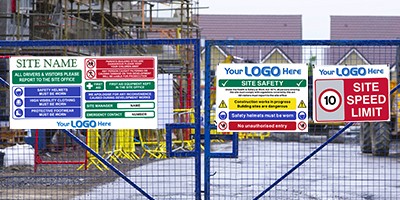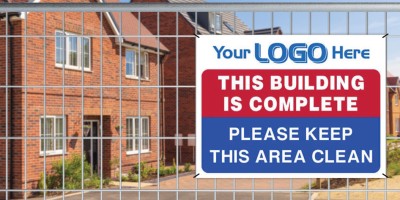Building a Solid Foundation: Construction Site Scaffolding Safety
Construction sites are bustling hubs of activity, where workers diligently create buildings and infrastructure. One crucial element across all construction projects is scaffolding and providing essential support and access for workers.
Scaffolding, despite its many benefits, can pose significant safety risks if not properly managed and maintained. In this blog, we will explore the importance of construction site scaffolding safety signage, essential questions about responsibility, and valuable advice for scaffold safety by implementing clear and informative signage.
The Significance of Construction Site Scaffolding
Scaffolding is an indispensable component of construction, allowing workers to reach higher levels, transport materials, and perform tasks effectively. It provides a stable working platform, minimising the chances of accidents, falls, and injuries. When properly erected and maintained, scaffolding not only ensures the safety of workers but also enhances productivity and efficiency on construction sites.
Questions to Ask About Scaffolding
1. Is the Scaffold Appropriate for the Job?
Ensure that the selected scaffolding type is suitable for the specific task. Different projects may require different types of scaffolding, such as supported scaffolds, suspended scaffolds, or rolling scaffolds.
2. Has the Scaffold been Inspected?
Prior to commencing work, a thorough inspection of the scaffolding must be conducted. Look for signs of damage, weakness or missing components and make sure to regularly check the scaffolding safety.
3. Is the Scaffolding Properly Assembled?
Ensure that the scaffold is correctly assembled according to the manufacturer’s guidelines and industry standards, making sure that identified issues are promptly addressed before workers begin using the scaffold.
4. Is There a Safe Access and Egress Route?
Workers need safe and easily accessible routes to climb up and down the scaffold, ensuring that ladders, stairs or other access points are secure and in good condition.
5. Are Workers Trained and Competent to Work on Scaffolding?
Only trained and certified workers should be allowed to erect, dismantle or work on scaffolding. Adequate training ensures that workers understand the safety protocols and can identify potential hazards.
Asking the right questions about scaffolding is important as it serves to safeguard the well-being of workers and prevent potentially life-threatening accidents. By seeking clarifications on scaffold design, construction, maintenance and usage, individuals can uncover potential dangers and therefore implement safety signage, such as our ‘danger scaffolding incomplete’ sign. Well-placed signs can comminate essential information, serving as a constant reminder and reinforcing the potential hazards of scaffolding.
Our Tips for Scaffold Safety on Construction Sites
With the construction industry being one of the most hazardous workplace environments in the UK, making sure workers stay safe when working at height can prevent scaffold related injuries from occurring.
1. Provide Safety Equipment
PPE (personal protective equipment) is the first line of defence against potential hazards on construction sites. Essential equipment such as hard hats, non-slip footwear and eye protection is crucial to protect them work injuries and accidents.
2. Regular Safety Training
Safety training should be an ongoing process to keep workers updated on the best practices and reinforce their understanding of potential hazards such as fall prevention, scaffold safety and hazard reporting.
3. Weather Considerations
Weather conditions can greatly impact construction site safety, especially when working on scaffolding or at height. Always keeping informed on the weather can ensure you take necessary precautions to weather-related risks.
The Role of Signage in Preventing Incidents
Clear and well-placed signage plays a pivotal role in enhancing construction site safety, especially when working on scaffolding. Signage serves as a constant reminder of potential hazards and safety precautions, reducing the likelihood of accidents.
Signage warns of specific dangers associated with scaffolding safety such as overhead hazards, restricted zones and potential falling objects, as well as providing clear safety instructions. Our range of scaffold signs can be used at height or in and around construction sites to help serve as a constant reminder of potential hazards and safety procedures.
Building a Safer Future with Glendining Signs
As a leading supplier of construction site signage, Glendining Signs recognises the significance of scaffold safety signage. Ensuring the safety and stability of scaffolding requires careful consideration and adherence to the best practices. By asking vital questions, prioritising safety, and enforcing clear and well-placed signage, construction companies can mitigate potential risks and safeguard their workers.
If you cannot find the sign you are looking for in our range of construction signs, our custom sign builder is the perfect way to design your own bespoke construction signs. Explore today or get in touch with our friendly team for assistance.




